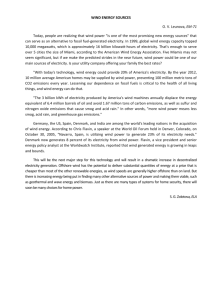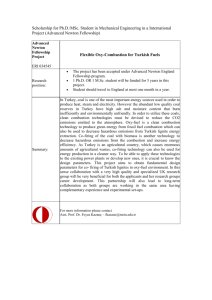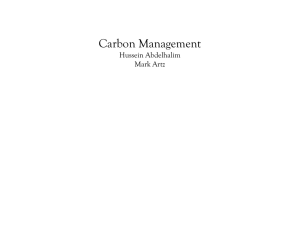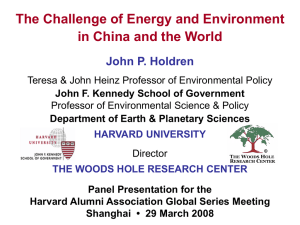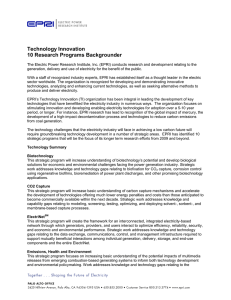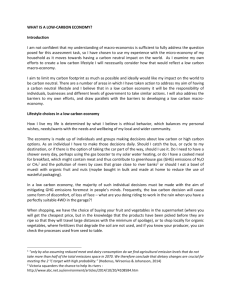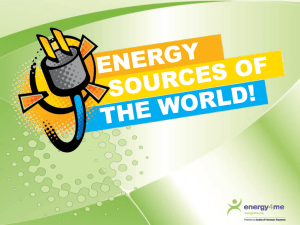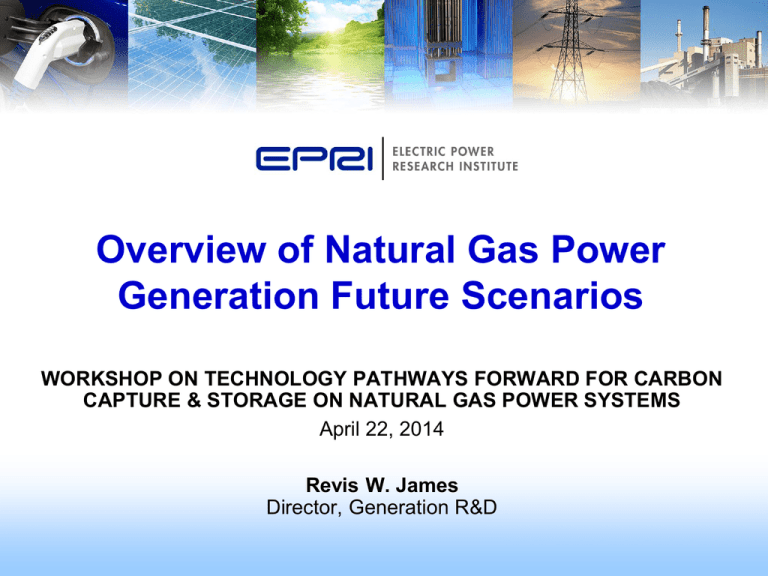
Overview of Natural Gas Power
Generation Future Scenarios
WORKSHOP ON TECHNOLOGY PATHWAYS FORWARD FOR CARBON
CAPTURE & STORAGE ON NATURAL GAS POWER SYSTEMS
April 22, 2014
Revis W. James
Director, Generation R&D
EPRI Overview
Mission
• Assure long-term availability of affordable, reliable, and
environmentally responsible electricity through research,
development and demonstration.
Key Facts
• 450+ participants in more than 30 countries
• EPRI members generate approximately 90% of the electricity in the United
States
• International funding of nearly 25% of EPRI’s research, development and
demonstrations
• Non-profit, independent, collaborative R&D institution
© 2014 Electric Power Research Institute, Inc. All rights reserved.
2
Generation Technology Options
Policy Constraints
• CO2 emissions reduction
• Existing limits(e.g. SOx, NOx, Hg, thermal pollution)
• Water availability
• Environmental impact of renewables (e.g. avian, bats)
• Policy-driven technology choices (e.g. renewables)
© 2014 Electric Power Research Institute, Inc. All rights reserved.
3
Generation Technology Options
Technical Requirements
• Meet demand
• Maintain reliability
• Minimize cost
• Recognize long lead times for technology deployment.
• Hedge technology risks
© 2014 Electric Power Research Institute, Inc. All rights reserved.
4
Natural Gas - Strengths
• Low NG prices make CTCCs attractive
– breakpoint with coal regionally dependent, but generally in $4-$6/mmBtu
range
• Reduced fossil plant emissions, including CO2
• More operational flexibility compared to coal units.
• Smaller capital outlay for new capacity, can be constructed more
quickly, lower water requirements compared to coal/nuclear
• Delays need to invest in more expensive options (e.g. coal, nuclear)
– Gives lead time to develop more advanced technologies in for other
generation technologies.
© 2014 Electric Power Research Institute, Inc. All rights reserved.
5
Natural Gas – Challenges
• Dynamic combustion control
– Balancing efficient operations w/emissions control
• CTCC cycling/HRSG reliability
– Renewable portfolio standards + increasing role of demand response, end-use efficiency
=> increased cycling of CTCCs => performance, reliability issues
– Heat Recovery Steam Generators (HRSGs) particularly important, problematic
• Assurance of supply
– Concerns regarding increasing opposition to fracking.
• Hedging against future high NG prices, price volatility
– Substantially increased demand for natural gas from the power sector could significantly
drive prices up.
– ~55% of electricity production costs for CTCCs = fuel cost.
© 2014 Electric Power Research Institute, Inc. All rights reserved.
6
Trending Toward Higher Efficiency
Improved Metallurgy, Coatings, Cooling, Aerodynamics, Size
Majority of existing units
© 2014 Electric Power Research Institute, Inc. All rights reserved.
7
R&D Focus Areas
Improved Efficiency, Flexibility, and Durability
• Fuel Flexibility
– LNG and Natural Gas Variability
– Lower NOx and CO Emissions/Combustion Dynamics
• Operational Flexibility
– Fast Startup and Shutdown
– Frequent Cycling (Many Starts Per Year)
– Part Load Efficiency and Low Load Emissions
– Load Following and Frequency Control
• System/Component Durability
– Preventive Maintenance
– Repair and Replacement Costs
– Forced/Unscheduled Maintenance, Catastrophic Failures
© 2014 Electric Power Research Institute, Inc. All rights reserved.
8
R&D Focus – CTCC + CCS
• Evaluate the performance and cost impact of applying
post-combustion capture (PCC) to today’s NGCC
• Cases considered:
–
–
–
–
Reference 556-MWe (Net) base NGCC plant
Retrofit post combustion plant to base plant
New build NGCC plant designed with capture
New build NGCC plant designed with capture + exhaust gas recycle (EGR).
• PCC technology = advanced amine solvent (Aker Clean Carbon)
• Conclusions
– Retrofitting is more expensive than integrated design.
– Key sensitivities
• Engineering, procurement & construction (EPC) contingency
• Unit capacity factor
• Overall levelized cost of electricity more sensitive to fuel cost than to avoided CO 2 cost
© 2014 Electric Power Research Institute, Inc. All rights reserved.
9
Overview from Electricity Sector Perspective
© 2014 Electric Power Research Institute, Inc. All rights reserved.
10
Together…Shaping the Future of Electricity


